![]()
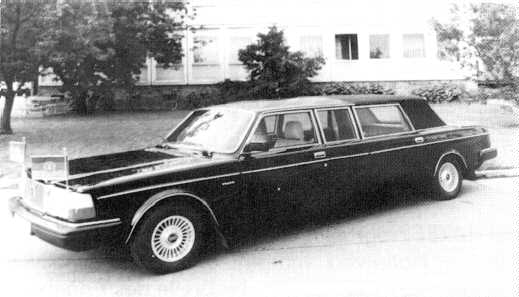 The 264 Landaulet with all the extras and two standards (hammer and
sickle). In good weather this was the perfect state car to pay tribute to the
flag waving public.
The 264 Landaulet with all the extras and two standards (hammer and
sickle). In good weather this was the perfect state car to pay tribute to the
flag waving public.

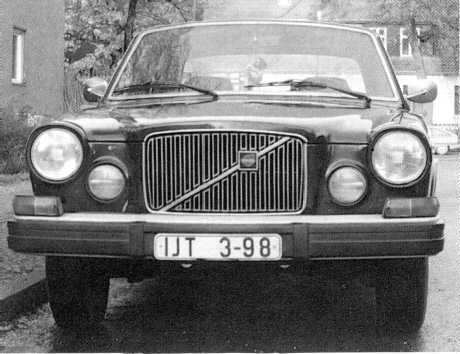
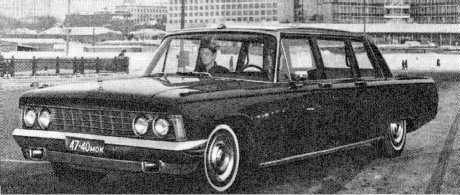 Since 1968 the SIL was hand-made as a separate model in the
Lichatschow factory in Moscow which was mainly used to produce
lorries. The State and Parade 114 type of ex-Russians shown remained
just as the extended Volvo restricted to top officials of former East Block
states and parties, in principle because they were too expensive. The SIL
had 8 cylinders, a 7 litre engine and 300 SAE-HP. The turning circle of
this unmanageable tank was 16 metres and it weighed 3000 kilogrammes
and drank about 40 litres of super petrol per 100 kilometre. Cheers!!
Since 1968 the SIL was hand-made as a separate model in the
Lichatschow factory in Moscow which was mainly used to produce
lorries. The State and Parade 114 type of ex-Russians shown remained
just as the extended Volvo restricted to top officials of former East Block
states and parties, in principle because they were too expensive. The SIL
had 8 cylinders, a 7 litre engine and 300 SAE-HP. The turning circle of
this unmanageable tank was 16 metres and it weighed 3000 kilogrammes
and drank about 40 litres of super petrol per 100 kilometre. Cheers!!

This ex-East German car IDA 8-10 changed in vehicle W-H 155.
Of course, we can't criticise everything concerning socialism for that is
not our job. It also had advantages to offer over our Western one-sided
capitalistic system. Our freedom is not always a complete freedom and by
comparison East Germany is not all dungeons. Even if freedom of
movement was possible, within the given limitations, people would still
have been on the streets in 1989. Then Erich Honecker would still have
been the first man in East Berlin. Then he'd still be driving a Volvo today.
That's today, the voting man.
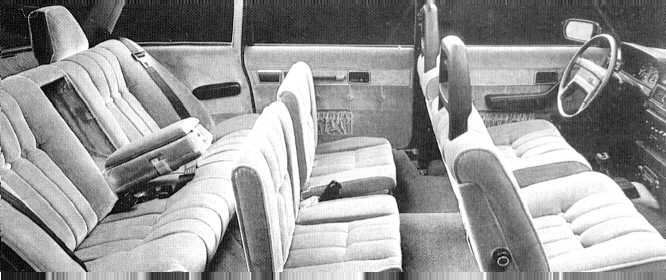 There would have been enough people in the former East Germany who
would have happily changed their Trabant or Wartburg for a western car.
The savings were there but the normal citizens would not be allowed to
buy such a car. The paupers reached breaking point wherein the car
played a big role. If the state council had been more tolerant then the
revolution would have been less devastating.
There would have been enough people in the former East Germany who
would have happily changed their Trabant or Wartburg for a western car.
The savings were there but the normal citizens would not be allowed to
buy such a car. The paupers reached breaking point wherein the car
played a big role. If the state council had been more tolerant then the
revolution would have been less devastating.
The authorities behaved stupidly underestimating the importance of the
small privileges of the citizens. After 40 years of suppression they didn't
expect that the citizens would go on strike.
In 1989 it happened. In the name of peristroika Gorbechov congratulated
Erich Honecker on his 40th National Day and advised him to stop and get
wise (i.e. get out). Not a nice recommendation, but Gorbechov probably
saw no other way out, other than trying to find a union between the west
and the almost static East Germany. Hence it was a relief when the people
rejected East Berlin.
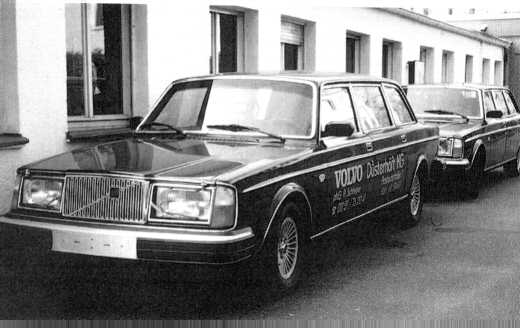 A second Prague Spring was not worth considering while Mielke and his
followers were around. Yes it was quite acceptable to let the Germans
shoot each other. But it seems that probably nobody wanted to play this
game. In any case, Gorbechov didn't drive a Volvo.
A second Prague Spring was not worth considering while Mielke and his
followers were around. Yes it was quite acceptable to let the Germans
shoot each other. But it seems that probably nobody wanted to play this
game. In any case, Gorbechov didn't drive a Volvo.
A 264TE photographed when the wall fell down by a firm in Köln. The
Volvo behind had already the new K-PS 888 plate.
After the Berlin wall came down everybody from Maagdeburg, Cottbus or
Halberstad was able to experience for himself and form his own opinion
over Volvos. This make was not longer a taboo. It wasn't so many years
ago that only big bosses drove Volvos Nowadays that association is no
longer valid. The vindication of Volvos in the New Germany had begun.
Of course the rumours surrounding Volvos didn't completely disappear,
but that was something that Swedes couldn't do a thing about. They were
victims of their choices. For many years in the former East Germany they
were the symbol of corruption and an inconsequent way of life of a
minority. They frightened a few brave citizens, in their dark blue or black
Volvos Odyssey of Volvo-carouses.
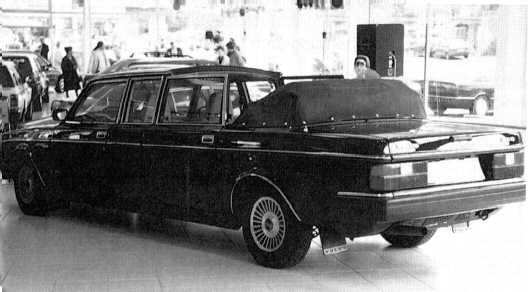 This picture has been taken in Köln this beautiful ex-East German
Landaulet-car has seen beter times. Where is this car nowadays?
This picture has been taken in Köln this beautiful ex-East German
Landaulet-car has seen beter times. Where is this car nowadays?
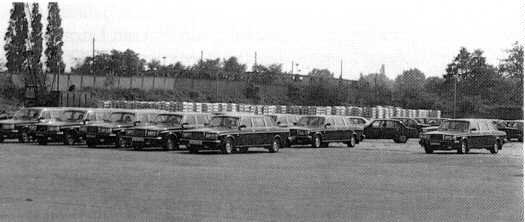 Now we're going to explain how the importing and reconstruction was done, for the 240/260 and 700 series.
Now we're going to explain how the importing and reconstruction was done, for the 240/260 and 700 series.

 The legendary 264TE limousine was brought out in 1977 and 1978. In
the years of 1983/84 there were a few additional 245 "transfers" stretched
van's. Altough they were build until 1980.
The Volvos that were used in the West generally had false registration
numbers and controlshields. That was for an obvious reason. With this
they could move more freely in the hurried opposition, especially in West
Berlin where they became more aware of the three big powers. As the
false papers or numbers became known by German Security Service or by
the Internal Security Service an amusing cat and mouse game began.
The legendary 264TE limousine was brought out in 1977 and 1978. In
the years of 1983/84 there were a few additional 245 "transfers" stretched
van's. Altough they were build until 1980.
The Volvos that were used in the West generally had false registration
numbers and controlshields. That was for an obvious reason. With this
they could move more freely in the hurried opposition, especially in West
Berlin where they became more aware of the three big powers. As the
false papers or numbers became known by German Security Service or by
the Internal Security Service an amusing cat and mouse game began.
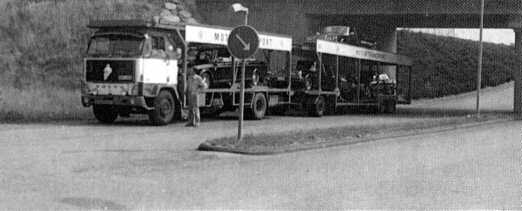 For the official closing of the procession in addition to some 164's, the
245T was also used. Some of the vehicles belonged to the government
and the others were divided amoungst the Stasi. So every "Firm" in the
formed East-German had his own carpark full of cars.
For the official closing of the procession in addition to some 164's, the
245T was also used. Some of the vehicles belonged to the government
and the others were divided amoungst the Stasi. So every "Firm" in the
formed East-German had his own carpark full of cars.
 In the 1980's the Volvo car in the carpark were somewhat ...............................
Cars from the 760 GL and 740 GL series were added.
However, in principle the care remained the same. The basis was usually a
heavy 264 top of the range model used as landaulet with all the extras,
from where the former East Geman bosses stand out, wave and smile to
the reserved people.
In the 1980's the Volvo car in the carpark were somewhat ...............................
Cars from the 760 GL and 740 GL series were added.
However, in principle the care remained the same. The basis was usually a
heavy 264 top of the range model used as landaulet with all the extras,
from where the former East Geman bosses stand out, wave and smile to
the reserved people.
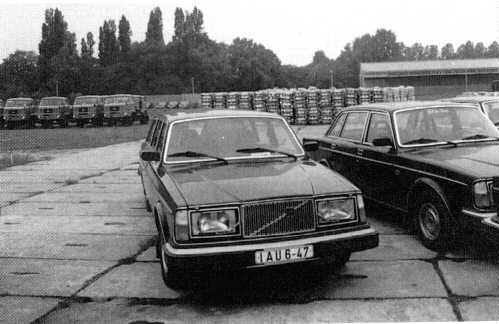 If occasionally cars were "removed" by the bosses of the carparks, they
were only used for the internal market. Here the Volvos could be sold for
a reasonable price, still much too high for the ordinary citizens. In the first
place those were the people who had been of service to the socialistic
goals: for example doctors, professors, technicians, scientists and
economists.
Whether they where happy with it, is another question. Those low rank
Volvos were now third choice, unuseable for the higher positions. By
buying you almost signed a contract for half your life. The motto: who
oils, drives well.
If occasionally cars were "removed" by the bosses of the carparks, they
were only used for the internal market. Here the Volvos could be sold for
a reasonable price, still much too high for the ordinary citizens. In the first
place those were the people who had been of service to the socialistic
goals: for example doctors, professors, technicians, scientists and
economists.
Whether they where happy with it, is another question. Those low rank
Volvos were now third choice, unuseable for the higher positions. By
buying you almost signed a contract for half your life. The motto: who
oils, drives well.
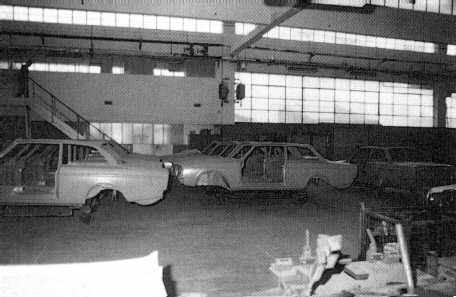 In reality a 264TE has never been sold, mostly it was a cast off 140, 164
and 245. The sweep through the cupboard came in 1990 after "the wall
fell". The rest has been resolved and many tried to make money out of it
from the political and economical changes.
In reality a 264TE has never been sold, mostly it was a cast off 140, 164
and 245. The sweep through the cupboard came in 1990 after "the wall
fell". The rest has been resolved and many tried to make money out of it
from the political and economical changes.
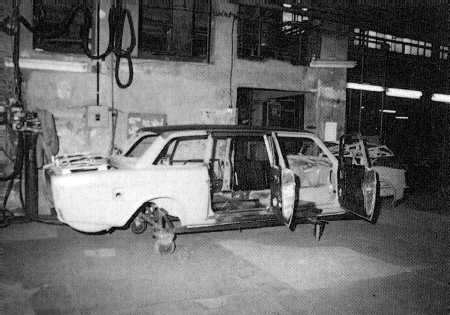 The only chance to obtain a Volvo during the DDR times was given in
1977/78 when about 2,000 Volvo 244 DLSs were imported. The majority
of them, as usual, were for well-off citizens, artists who had earned good
money. When having saved at least 50,000 East-marks, one had a good
chance to be able to become the owner of a 240.
The only chance to obtain a Volvo during the DDR times was given in
1977/78 when about 2,000 Volvo 244 DLSs were imported. The majority
of them, as usual, were for well-off citizens, artists who had earned good
money. When having saved at least 50,000 East-marks, one had a good
chance to be able to become the owner of a 240.
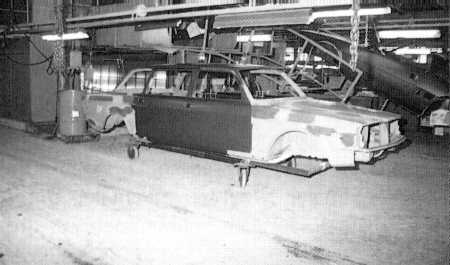 A Russian Fiat, a fraudulous copy of the Italian Fiat124, meant pure
luxury, costing a mere 19.000 East-Marks. Can one imagine what it
meant to buy a Volvo? For a worker it meant something utopian, a dream
not to be fulfilled. But, in the end, wasn't it a western car, didn't one have
the possibility to get one? An Audi, a Mercedes, BMW? Of course that
was totally impossible.
A Russian Fiat, a fraudulous copy of the Italian Fiat124, meant pure
luxury, costing a mere 19.000 East-Marks. Can one imagine what it
meant to buy a Volvo? For a worker it meant something utopian, a dream
not to be fulfilled. But, in the end, wasn't it a western car, didn't one have
the possibility to get one? An Audi, a Mercedes, BMW? Of course that
was totally impossible.
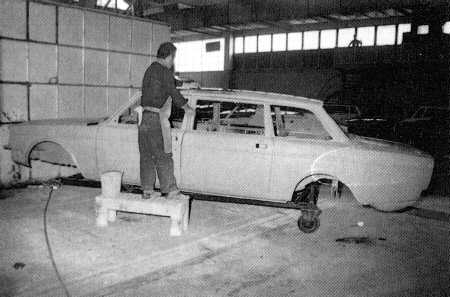

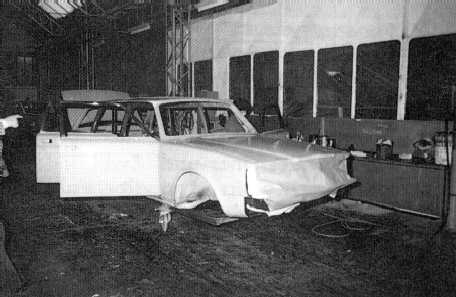
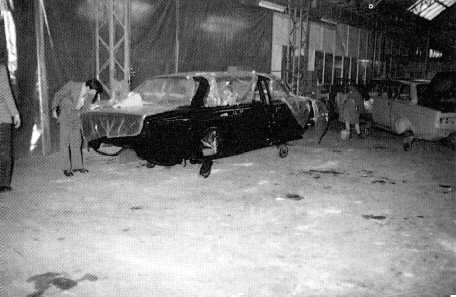

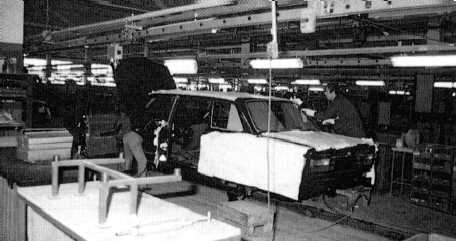

![]()